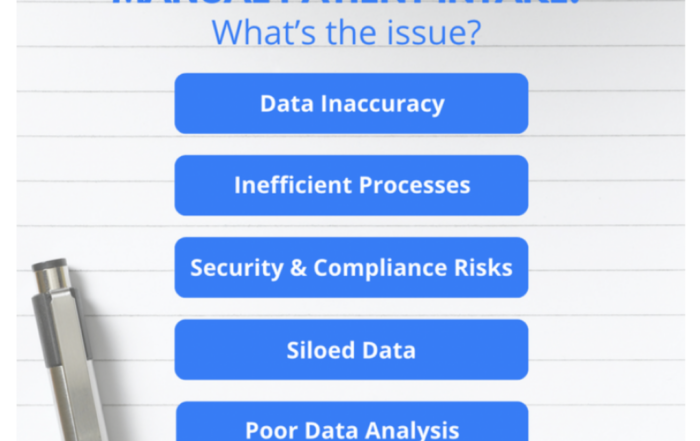The patient referral system today is broken, rampant with issues and roadblocks that can be corrected. The main issue with physician referrals is that doctors don’t even realize the mistakes they are making! Addressing the system issues requires a more effective platform for medical staff, patients, and physicians alike. If your healthcare practice is still using antiquated one-way communication methods like fax, e-fax, or, your EMR to file referrals away and not communicate with other providers in real-time, it’s time to make a change.

Image by mcmurryjulie from Pixabay
Facing the problems with patient referral networks is the first step towards solving those problems and making the entire system a more effective platform for medical staff, patients, and physicians alike.
How to fix the five physician referral mistakes most don’t know they’re making:
1. Set Realistic Expectations
From the very beginning, it is the responsibility of the primary care physician to set what the patient and the specialist should expect from the referral process; however many don’t set expectations upfront which leads to many unanswered questions and outright frustration. To solve this problem, set the goals of this process with your patient before referring them to a specialist. Allow the patient to ask questions and understand the process and THEN refer your patient.
After setting expectations about this referral, contact the specialist you’ll be working with to bring them up to date on the situation as well as how this relationship will continue to pan out.
The specialist will have feedback about the patient and the process, which is completely acceptable and important. This discussion about expectations must be set from the beginning to prevent any issues down the road.
Both the primary care physician and the specialist should ask one another how long is this process projected to take, who will manage the patient throughout the process, what paperwork is needed, the urgency of the situation, and how often each professional will communicate with one another about the patient’s status or any other question necessary to ensure the patient is in good hands and that the process is kept as efficient as possible.
Use a professional referral network CRM software to manage these expectations in an agreement to ensure everyone agrees upon the terms of the relationship between the primary care physician, the specialists and the patient.
2. Don’t Play the Guessing Game
Many physician referrals go awry when questions aren’t asked, and guesses are made about the status of the patient, tests that were taken, missing documentation, and more. This is a huge problem for a referral network because the patient is the one who will quickly see the negative effects of guesswork when it comes to their well-being. Too often doctorer referrals get made to another physician without the proper paperwork, test results, or any other notes about the patient. This is extremely cumbersome with patients that have an extensive medical history and need an accurate trail of information about them presented to each physician to properly prepare them.
It is up to the primary care physician, the specialist, and the patient to ask questions and double-check that all the necessary information about the patient’s progress is being given to all necessary parties. Guesswork should never be acceptable, and it shouldn’t have to be the patient’s job to stay on top of the exchange of necessary paperwork and information. Progress updates between the primary care physician and the specialist shouldn’t be impacted by a lack of access to information or by a lack of understanding of a patient’s needs. Store all the information about a particular patient’s medical history in an organized database that can easily be accessed between all parties to eliminate guesswork at the source. Every progress update should be a quick review of the necessary medical history of the patient to ensure everyone is clear and that there’s nothing left unsaid about a patient’s progress.

Photo by National Cancer Institute on Unsplash
3. Manage the Patient Journey
If there is a lack of understanding from the beginning of your relationship with other medical professionals in the referral network, then problems could arise at the expense of the patient. Often the primary care physician and the specialized physician don’t think to clarify each aspect of their relations in a referral capacity, specifically who will be managing the overall care of the patient during the process.
If one physician is telling a patient one piece of advice and another specialist is telling them something different, then this could be seriously frustrating for a patient during an already potentially difficult medical issue or procedure. This will not be a great experience for the patient. To solve this issue, draft a referral agreement that clearly defines each person’s role. Many primary care physicians define themselves as the decision-maker for the health concerns of the patient, along with the patient’s approval, taking a consulting physician’s advice and applying it appropriately to suit the patient’s needs. Make sure the role of the final decision maker concerning administering medical advice is clarified in writing to avoid confusion, frustration or misinformation. Create a referral agreement that specifies how quickly consultants or specialists must see referred patients, how soon after the visit they need to get a report to the referring physician and whose job it is to manage the patient. We’ll discuss more details of a referral agreement below.

Photo by Edward Jenner from Pexels
4. Improve Communication
Present among all the other mistakes we’ve highlighted is a lack of communication. Often a physician in a referral agreement neglects to clarify a particular aspect of a case or doesn’t think to ask the opinion of the other doctors, which can lead to a lack of productivity for the patient’s health. By relying on guesswork or tunnel vision decision-making, it defeats the purpose of involving other members in a referral network. The unique skill sets and talents of each physician can help patients progress quicker, more effectively, with less pain and recovery in the long-term.
To solve this problem and make the most of the physician referral network: read, listen and watch. When you read the documentation about the patient provided by other healthcare professionals you’re actively absorbing as much information about their medical history to better prepare how you’re performing your duties. Listen to the feedback from the other physicians and the patients to understand the full spectrum of this patient’s history and needs. Ask questions consistently to learn about the patient’s needs and the intricacies of this particular case since more information is available than any documentation could provide. Lastly, watch the patient or other physician describe the patient’s case in detail by observing anything that could assist in the diagnosis or treatment. Develop a concise referral process or utilize an established referral platform to make sure that communication is consistent across all parties involved in a patient’s case.
5. Close the Loop for the Patient
Sometimes primary care physicians don’t reach out to a specialized physician in time, prolonging a patient’s experience or even possibly jeopardizing the patient’s health. It is easy for a doctor to unknowingly decide against a referral to avoid the embarrassment of passing a patient along. Some doctors have a fear of appearing unknowledgeable or are attempting to keep costs down but in actuality, they are causing long delays for their patients in the long term.
To ensure that a patient’s care isn’t delayed unreasonably, create a referral agreement that specifically spells out how communication will take place, what time frames will be put in place for each patient depending on their case, who’s managing the patient care from a decision making perspective, the operational processes that will take place and the benefits for each party involved.
Once the agreement is drafted, ensure that all members of the process agree to the terms stated in the documentation.
Now implement this process in your existing referral program, and it will ideally save time for everyone involved, most importantly for your patients. One of the best ways to ensure your referral network remains efficient over time and provides a quick process for patients is to do inspections and audits of the process on a quarterly or annual basis. This way your organization can prove whether having an official process for referrals is improving and speeding up the process for your patients or if it is just for show. If the idea for the program is there, but the execution isn’t, then there is no point to the program. By improving the speed at which a patient’s care is offered your practice could see increased satisfaction from patients and an increase in referrals to your organization from your existing list of patients.
Not to mention, having your referral program online can help cut out unnecessary paperwork, communication, tracking and management that could also slow down the overall patient care process.
How will you strive to improve your physician referral program and avoid these mistakes? Have these mistakes happened to you? What techniques have work to speed up the referral process for both your organization and patients?














